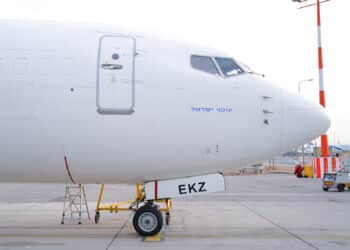The world’s top 50 cargo carriers

A year ago, when we looked at the top cargo carriers of 2015, we focused on Emirates’ rapid rise from nowhere to become a powerhouse that dominated the international air freight market. But Emirates does not carry domestic cargo, and FedEx, as it had done for many years, combined its massive US domestic traffic with significant international traffic to be, by a considerable margin, the world’s top cargo carrier, with Emirates a distant second. In our analysis, we pointed out that, if the rest of the world was well behind FedEx in 2015, it was worth thinking about what the gap would be like in the future, when FedEx had swallowed TNT.
Well, that future is now upon us, and the gap has become a chasm. In 2015, FedEx’s total cargo traffic was 29% greater than its nearest competitor (Emirates). In 2016, with TNT’s cargo included in the FedEx total, the gap between FedEx and Emirates increased to 37%. That is, FedEx now flies well over one-third more cargo than any other airline or airline group.
But there is more to the world of air freight than just FedEx and Emirates, and today we begin a multi-part analysis of the world’s top fifty cargo carriers, ranked by freight tonne kilometers flown in international, domestic, and total service in 2016. (You can read Part II here.)
On the international side, Emirates continues to dominate. It became the world’s top international cargo carrier in 2013, and has maintained that position since. The Dubai-based carrier leveraged the advantages of a favorable geographic location, a huge fleet, and a strong management focus on cargo to rack up 12.51 billion revenue tonne kilometers (RTKs) of international cargo flown in 2016 – well ahead of Cathay Pacific and the Lufthansa Group, which kept their respective #2 and #3 positions from the previous year. The well-publicized cargo problems at Air France-KLM, the perennial top international cargo carrier until 2013, have seen it gradually overtaken, not just by Emirates, Cathay, and Lufthansa, but now also by Qatar Airways, DHL Express, and FedEx.
On the domestic side, the two big US-based integrators continue to dominate, with FedEx reporting 8.75 billion RTKs flown. UPS, as usual, was next behind FedEx, reporting 5.68 billion RTKs – almost three times the 2.01 billion RTKs flown by China Southern Airlines, the leading non-express carrier in domestic traffic.
As mentioned above, FedEx was the leader in total cargo traffic, with 17.08 billion RTKs flown in 2016. Emirates was well back, reporting total cargo traffic of 12.51 billion, with UPS, Cathay, and DHL Express rounding out the top five. But the gaps between these positions, and between most of the subsequent positions, were relatively small.
The chart below shows our best estimate of the international, domestic, and total cargo traffic (including mail and both scheduled and charter freight) flown by the top fifty carrier groups worldwide. In Part II we will examine the assumptions behind the way we present the data, and how those assumptions differ from other “Top 50” compilations. In Part III we will dig deeper into the data to understand what it tells us about the trends affecting the industry.





